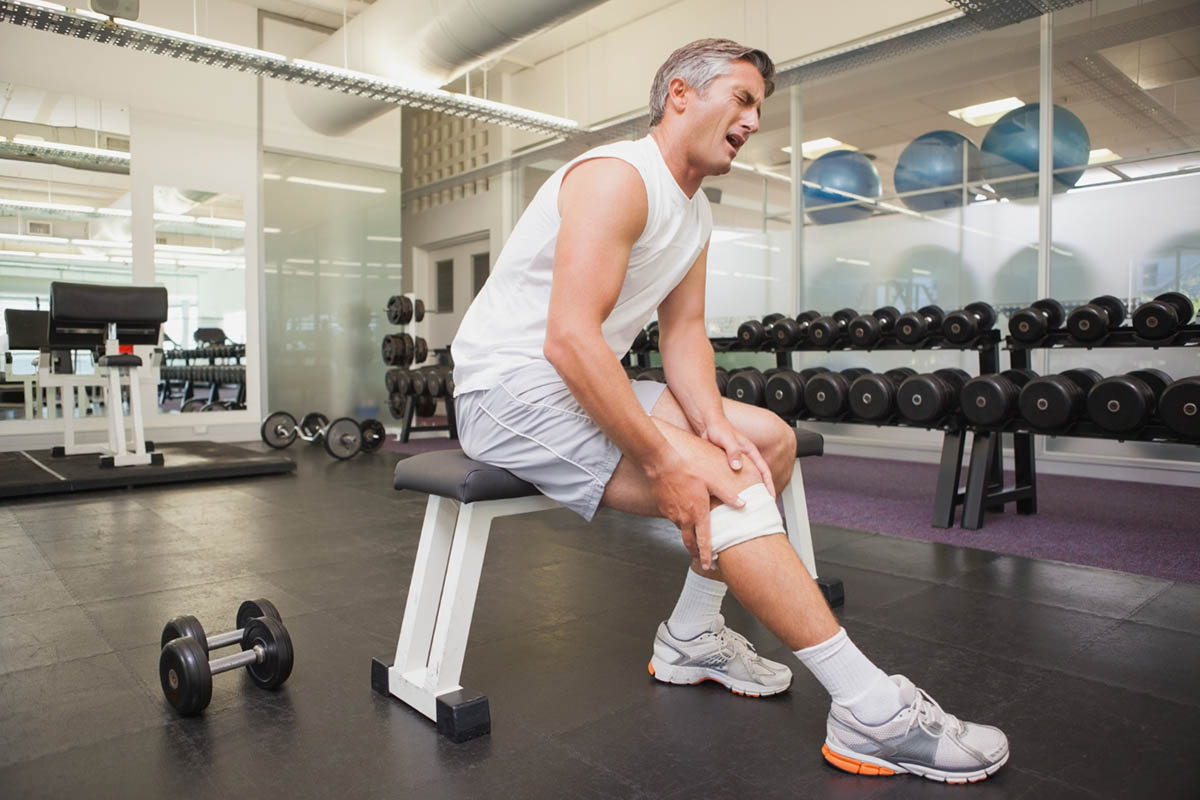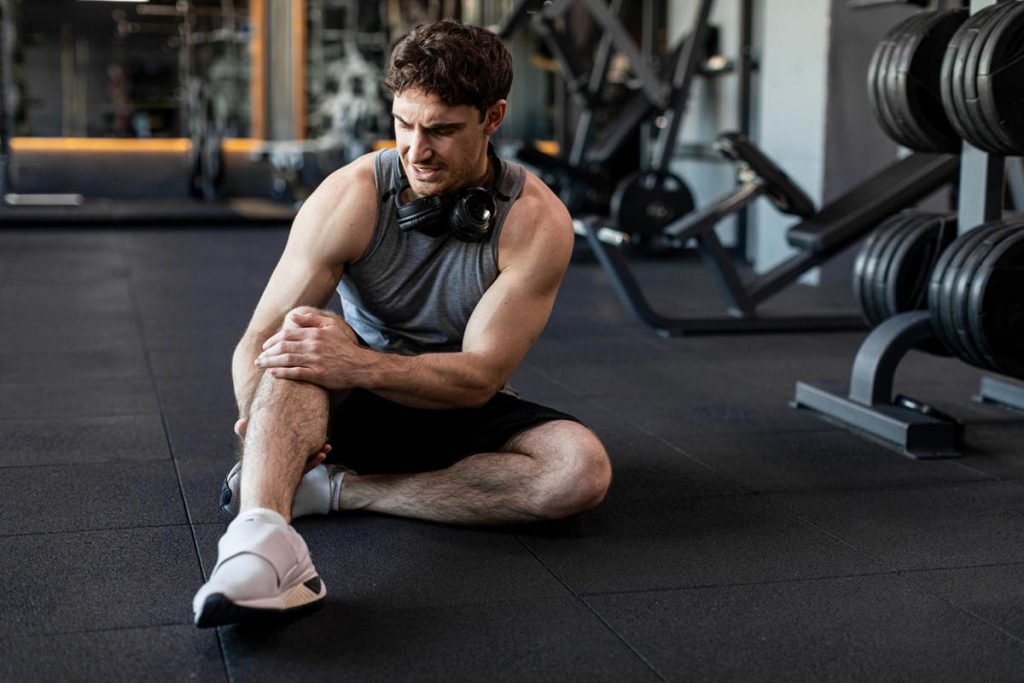Knee pain when squatting is a common concern that affects athletes, gym enthusiasts, and even those performing routine tasks. Many people ask, “Why do my knees hurt when I squat?” This discomfort can stem from improper form, muscle imbalances, or underlying conditions such as knee osteoarthritis or patellofemoral pain syndrome. Addressing knee pain is crucial for maintaining mobility, preventing injuries, and achieving long-term fitness goals.
This comprehensive guide delves into the causes, symptoms, prevention strategies, and treatment options for knee pain when squatting. Whether you’re dealing with sudden sharp knee pain when squatting or seeking advice for persistent discomfort, this blog has you covered.
Anatomy of the Knee Joint
The anatomy of the knee joint is complex, comprising bones, ligaments, tendons, cartilage, and synovial fluid. Each component plays a crucial role in the joint’s function and stability. This joint comprises several key components:
- Bones: The femur (thigh bone), tibia (shin bone), and patella (kneecap) form the knee joint.
- Ligaments and Tendons: These provide stability and connect bones to muscles.
- Cartilage: The meniscus cushions the joint, while articular cartilage ensures smooth movement.
- Synovial Fluid: This lubricates the joint, reducing friction during motion.
The knee’s intricate structure allows it to perform various movements, but this complexity also makes it vulnerable to injuries like ligament strains, meniscus tears, and patellar mal-alignment.
Common Causes of Knee Pain When Squatting
Knowing the common causes of knee pain while squatting helps identify the problem and take corrective action. Issues like poor technique, overuse, or conditions like patellar tendinitis often contribute to discomfort. Identifying these factors is the first step to resolving pain.
Incorrect Stance or Posture While Squatting
Incorrect stance or posture while squatting is one of the leading causes of knee pain. Common mistakes include allowing the knees to move too far forward, which places excessive pressure on the patellofemoral joint and can lead to kneecap pain. Another frequent error is valgus collapse, where the knees move inward due to inadequate hip and core stability, increasing stress on the joint. Additionally, issues such as lower back rounding or improper weight distribution disrupt biomechanics, further contributing to discomfort and potential injury.
Weak Gluteal Muscles
Weak gluteal muscles lead to reduced hip stability, forcing the knees to compensate during squats. Incorporating core and glute engagement exercises can help improve stability and prevent pain.
Overuse or Repetitive Strain Injuries
Frequent squatting without sufficient recovery can cause overuse injuries like patellar tendinitis or iliotibial band syndrome (ITBS). These conditions are characterized by inflammation and irritation in the surrounding structures.
Knee pain is notably prevalent among individuals in occupations that require frequent heavy labor, kneeling, or squatting. Studies have shown rates as high as 60% in such professions, emphasizing the physical toll these activities can take on the knee joint over time.
Conditions That Cause Knee Pain When Squatting
Knee pain during squatting can stem from various underlying conditions that affect the joint’s structure and function. These conditions often involve inflammation, misalignment, or wear and tear of the knee components, leading to discomfort during movement. Understanding these potential causes is key to addressing the pain effectively and finding the right treatment approach.
- Patellofemoral Pain Syndrome: This condition causes pain at the front of the knee due to misalignment or overuse of the kneecap. Patellofemoral pain is most common among individuals under 40 who are physically active, with an estimated lifetime prevalence of 25%. Experiencing anterior knee pain during a squat is a highly sensitive indicator for patellofemoral pain, with approximately 91% sensitivity and 50% specificity for the condition.
- Patellar Tendinitis: Often referred to as “jumper’s knee,” this involves inflammation of the tendon connecting the kneecap to the shin.
- Knee Osteoarthritis: Degeneration of cartilage leads to joint stiffness, pain, and reduced range of motion.
- Iliotibial Band Syndrome: Tightness in the IT band results in lateral knee pain.
- Meniscus Tears: These cartilage injuries can occur suddenly or over time, leading to sharp pain and limited mobility.
Symptoms Associated With Knee Pain When Squatting

Knee pain when squatting can present a variety of symptoms that offer clues about the underlying cause. These symptoms may vary in severity and location, often reflecting the extent of the issue affecting the joint. Common signs include sharp or severe pain, particularly during movement like bending or straightening the knee, and swelling or stiffness that limits flexibility. Weakness or instability may make the knee feel as if it could give out, while a reduced range of motion can cause difficulty in fully bending or straightening the joint. Redness or warmth may sometimes indicate a more serious condition, such as infectious arthritis. Identifying these warning signs is crucial for early intervention and prevention of further damage. If symptoms persist, consulting a doctor of physical therapy or a specialist for a thorough physical exam is strongly recommended.
Treatment Options for Knee Pain When Squatting
When your knees hurt when squatting, exploring tailored treatment options is crucial for effective relief. These options vary and depend on individual needs, including physical therapy and pain management techniques. Strengthening exercises, combined with proper guidance, can address underlying causes and prevent future issues. By selecting the right treatment plan, you can restore function, alleviate discomfort, and regain confidence in your movements.
Stretching and Strengthening Exercises
Incorporate stretching exercises for the knees, such as hamstring stretches, quad stretches, and hip-opening movements. Combine these with strength training exercises to improve muscle balance and support knee stability.
RICE Method (Rest, Ice, Compression, Elevation)
The RICE method (Rest, Ice, Compression, Elevation) is a proven approach for managing acute knee injuries and alleviating knee pain when squatting. This method promotes healing by combining rest, which allows the knee to recover, with ice or cold therapy to reduce swelling. Compression wraps provide support and help prevent further inflammation, while elevation improves circulation and minimizes fluid buildup. The RICE method is a cornerstone of knee pain management, offering short-term relief through simple yet effective steps: rest to avoid aggravating the pain, ice to manage swelling, compression for stability, and elevation to reduce inflammation and promote recovery.
Pain Management
Pain management involves various approaches, ranging from medication to manual therapy and exercise-based solutions. Effective strategies alleviate symptoms and address the root cause of the pain.
Physical Therapy
Engaging in 1 on 1 physical therapy services can offer personalized care. A physical therapist may use manual therapy techniques, tissue mobilization exercises, or customized plans to address your specific needs. Professionals with certifications like crossfit mobility certified or diploma in osteopractic can provide advanced care.
Short-term physical therapy has proven effective in reducing pain and stiffness while enhancing functional capacity for individuals with knee osteoarthritis. This approach is practical and cost-efficient, offering patients improved mobility and quality of life.
Prevention Tips
Preventing knee pain requires a proactive approach to movement, strength training, and lifestyle choices. Simple adjustments, such as using correct form, warming up effectively, and addressing muscle imbalances, can make a significant difference. Prevention strategies help safeguard your knees for years to come.
Proper Form and Technique
Proper form and technique are vital for safe squatting and pain prevention. Misaligned knees, poor weight distribution, or other technical errors place unnecessary stress on the knee joint. Learning and maintaining correct posture ensures effective and injury-free movements.
Warm-Up and Cool-Down
Warm-ups and cool-downs are essential steps in any workout routine, particularly when squatting. These practices prepare your muscles and joints for activity, reducing the likelihood of injury, and aid recovery after exercise. Skipping these steps can lead to stiffness and strain.
Strength and Flexibility Training
Strength and flexibility training forms the foundation of healthy knee function. Building stronger muscles around the joint and improving flexibility reduces strain on the knees, enhancing overall performance and minimizing the risk of pain. A balanced approach ensures optimal movement patterns.
Gradual Progression
Gradual progression is key to preventing overuse injuries and ensuring steady improvement in strength and mobility. Rushing to lift heavier weights or perform advanced exercises can strain your knees unnecessarily. By progressing gradually, you allow your joints and muscles to adapt safely.
Always Listen to Your Body
Paying attention to your body’s signals is critical for preventing knee pain when squatting. If you experience discomfort or fatigue, you must pause and reassess your movements. Ignoring pain or pushing through it can lead to more significant injuries. Prioritize rest and make modifications as needed to protect your knees and promote recovery.
Maintaining a Healthy Body Weight

Maintaining a healthy body weight reduces stress on your knee joints. Excess weight can amplify the pressure on your knees during squats and other activities, increasing the risk of pain or injury. Combining proper nutrition with regular exercise helps support joint health and overall well-being.
When to Seek Medical Help?
If knee pain continues despite self-care measures, it’s important to consult a specialist. You should seek medical attention if you experience sudden sharp knee pain when squatting, swelling, redness, or warmth around the joint. Additional warning signs include symptoms of post-traumatic arthritis, severe instability, or indications of infectious arthritis. A doctor of physical therapy can conduct an individual assessment to determine the underlying cause and recommend the best course of treatment for lasting relief.
Conclusion
Knee pain when squatting is a manageable issue with the right knowledge and proactive measures. You can prevent and treat knee pain effectively by focusing on proper form, addressing muscle imbalances, and seeking professional guidance when necessary. Incorporate the tips and treatments outlined here to keep your knees healthy and enjoy the benefits of squats without discomfort.
FAQs
Is it okay to squat with knee pain?
It’s best to avoid squatting if you experience sharp or severe pain. Opt for knee-friendly squat alternatives or low-impact squat variations while addressing the underlying issue.
How do I fix my knee pain when squatting?
Focus on improving form, strengthening weak muscles, and incorporating pre-squatting preparation like warm-ups. If pain persists, seek 1 on 1 physical therapy services for personalized exercise plans.
Are deep squats bad for your knees?
Deep squats are not inherently bad but may stress the knees if performed incorrectly. Prioritize proper squat technique and use modifications like heel elevation to protect your joints.

